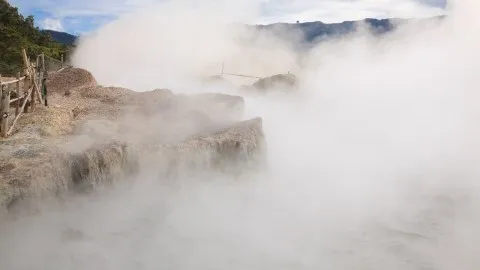
Modest geothermal growth to persist
Growth drivers will only be few, especially those in tectonically active areas.
The Asia Pacific’s geothermal sector has reached a standstill following the impacts of the COVID-19 pandemic. This is despite the rising demand for geothermal power amidst carbon neutrality pledges of several corporations and countries over the past years.
Whilst opportunities for the market are continuously appearing, recent actual growth was driven by only a few markets due to geographical restrictions and the indiscernible amount of pandemic-related constraints.
Fitch Solutions infrastructure and power and renewables analyst, Daine Loh, noted that the chances of geothermal faring in these pledges are dependent on the location of resource potential.
“We have only really seen this dynamic playing out in New Zealand, as its geothermal sector might benefit from its goal to achieve 100% renewable energy (including hydropower) by 2030; a target that has recently been brought forward by five years from 2035,” Loh said.
Moreover, the market has to be met with caution amidst issues on supply chain disruptions, financial headwinds, and the interruption of business activity from the pandemic. In the Asia Pacific, geothermal’s recovery will be driven predominantly by Indonesia and the Philippines, two of the region’s geothermal giants based on power generation capacity.
A key priority
Despite the modest geothermal growth of Indonesia, government-led exploration drilling is being initiated in multiple working areas.
According to the Institute for Energy Economics and Financial Analysis (IEEFA) energy finance analysts—Putra Adhiguna, Elrika Hamdi, and Sam Raynolds—the campaign is expected to help lower the risk for potential investors, and to narrow the gap between investor expectations and the power purchase price which could be afforded by the state utility company, PT Perusahaan Listrik Negara (PLN).
“This new development is also followed with a rising interest in utilizing slim-hole exploration wells to lower cost and further mitigate the exploration risks,” the analysts said.
They also noted that tariffs remain a key challenge, and investors are waiting for the issuance of presidential regulation on renewable energy tariffs which will likely define the future outlook for the Indonesian geothermal market.
Meanwhile, Loh noted that expanding the geothermal industry is a key priority for the Indonesian government given the vast potential for geothermal power generation in the country, which is estimated at 28 gigawatts (GW). The government is also targeting a geothermal power capacity of 7 GW by 2030 as part of Indonesian President Joko Widodo’s power expansion plans.
“Although ahead of our current forecasts for the segment, there is significant upside potential in light of a number of supportive policies in place to help fulfil this target,” Loh said.
Adhiguna, Hamdi, and Reynolds pointed out that growth potential in Indonesia will hinge on the awaited presidential regulation and the outcome of the government-led exploration drilling. Also, there has not been a consensus on how to place a value on geothermal as baseload power amidst growing variable renewable energy capacity in Indonesia.
“Finding the right balance between the tariffs, risk profile, and geothermal value as a baseload power are some of the subjects which the industry and policymakers will need to explore further to successfully promote geothermal in the future,” they said.
Ramping up projects
The Philippines’ geothermal capacity seems to also have halted. As of April 2021, the country’s total installed geothermal capacity stood at 1,928 megawatts (MW) and accounted for 11% of the country’s total electricity generation, but there has only been one new geothermal project to come online since 2008.
The IEEFA analysts noted that although its government has committed to a greenhouse gas emissions reduction target of 75% by 2030, whether it will provide regulatory incentives for new geothermal developments remains to be seen.
“Industry groups in the Philippines have requested investment incentives in the form of insurance, a risk mitigation fund, or cost-sharing for the high capital expenditures required in the drilling stages of early development. However, these proposals seem to have gained little traction to date,” they said.
They added that the country is poised for limited growth in the medium-term, with several projects anticipating an additional 170 MW of new geothermal capacity by 2030. “Whilst it may take a few years, added financial incentives from the government could provide a much-needed boost in eventually getting the projects online.”



















 Advertise
Advertise






